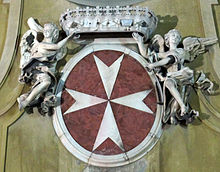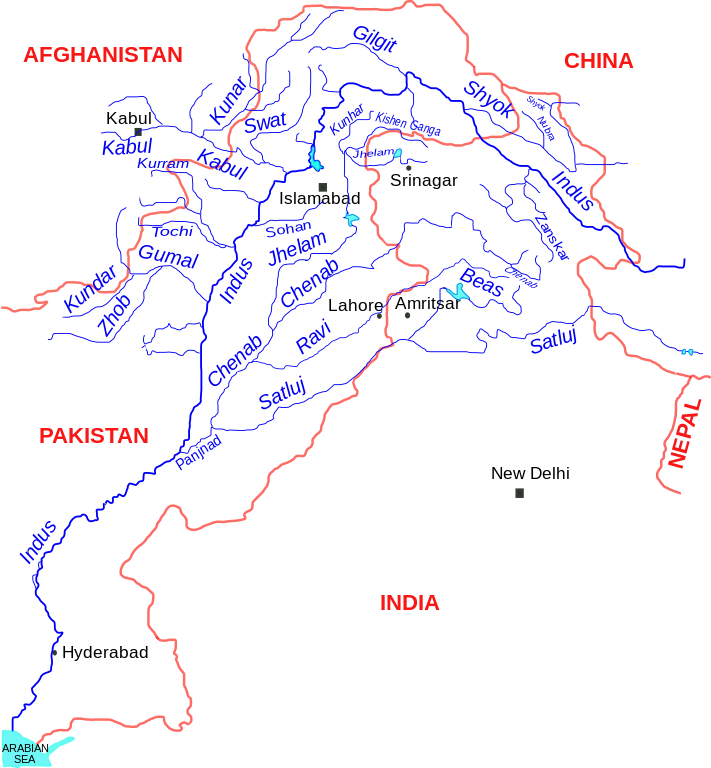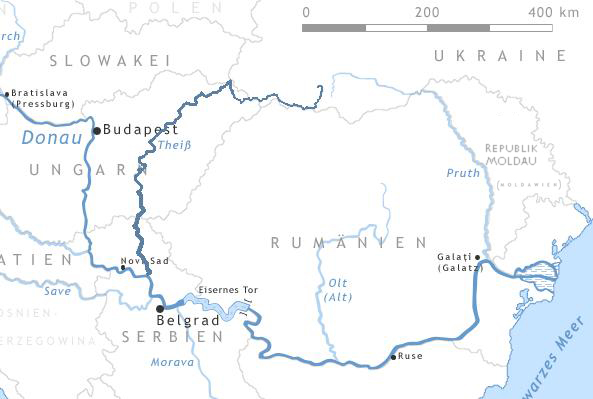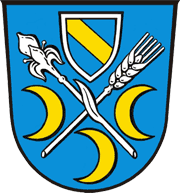truthSeeker
Primećen član
- Poruka
- 862
http://www.perseus.tufts.edu/hopper/text?doc=Perseus:text:1999.04.0064:entry=serbi-geo&highlight=sirbiEth. SERBI or SIRBI (Eth.Σέρβοι or Eth. Σίρβοι, Ptol. 5.9.21), a people in Asiatic Sarmatia, according to Ptolemy (l.c.) between the Ceraunian mountains and the river Rha, above the Diduri and below the Vali. Pliny, however (6.7. s. 7), places them on the E. shore of the Maeotis, between the Vali and the Arrechi. (Comp. Schaffarik, Slav. Alterth. i. p. 165.)
Ptolemy AD 90 – c. AD 168
Pliny 23–79 CE
Ceraunian planine su u jugozapadnoj Albaniji ali i ime za Kavkaz...
http://en.wikipedia.org/wiki/Ceraunian_Mountains
u stvari Ceraunian je po svemu sudeći ime za planine Seriana... mountaines of Serri se recimo odnosi na Karpate u jednom od antičkih tekstova koji sam ranije citirao na ovom forumu.... pa nam ovo Ceraunian mountaines na jugozapadu Albanije govori da Seriani žive i na jugozapadu Albanije...
pri tome znamo da je Šar planina kod Grka Scardus planina nazvana po Scordiscima...
reka Rha je Volga
znači kad pričamo o Serbima pričamo o ljudima koji se koliko je Ptolomeju poznato prostiru ili
1) od Kavkaza do Volge
reka Volga

Kavkaz
[


ili
2) manje verovatno ali moguće - od Grčke do reke Volge ili neke druge reke koja se naziva Ra ...
ispod njih su Diduri a iznad Vali...
u ovom slučaju Diduri bi bili Dardani a Vali bi bili Volosi / valskr" / "valir" / walois tj. Kelti (Kelti su originalni Germani i verovatno vezani i za reku Volgu tj. njen severni deo i za gen koji nosi crvenu kosu)

dakle ovi Serbi bi bili južno od Kelto-Germana a severno od Dardana... što znači na teritorijama Ilira, Panonaca, Tračana, Dačana, Sarmata...
što ne znači da su ovi Serbi isključivi naseljenici tih oblasti niti da ne žive i drugde...
Scordisci (kandidati za podunavske Seriane) imaju zonu uticaja od Grčke do Slovačke... ovo verovatno ima veze sa plemenima Serri, Serretes, Serrapili među Panoncima....
moja pretpostavka je da ovaj uticaj od Slovačke ide u luku iza Karpata (koji se nazivaju i mountains of Serri) sve do Crnog mora..i dalje do Azovskog mora i Kavkaza..pa zatim do zemlje Serice i Saracena... ovo je idealno za ratničko trgovački narod sa malim naseobinama duž velikih teritorija...
uostalom Seneka pominje Seriane i oko Dunava i na Kaspijskim visoravnima.. ruska primarna hronika govori o podunavskim Slovenima (među kojima eksplicitno pomminje Srbe, Hrvate i Karantance) koji pre širenja rimskog carstva žive oko Dunava u tadašnjoj (pod tadašnja mislim na početak 12-og veka kada je zapisano rusko usmeno predanje) Mađarskoj (tada obuhvata Vojvodinu) i Bugarskoj (tada obuhvata severnu Srbiju)... ovo je upravo lokacija gde žive Scordisci i Panonci među kojima i Cornacates u vreme pre ekspanzije rimskog carstva
luk oko Karpata od Crnog mora do Slovačke pa Dunavom na jug je upravo put kojim mtDNA genetika prodire iz istočne i severne Azije u Evropu...

s obzirom da je ovo naseljavanje žena verovatno se ne radi o Avarima i Hunima već o ranijem mirnom doseljavanju celih naroda a ne samo ratnika...
- - - - - -
Pliny Serbe smešta na obale Azovskog mora... što je lokacija gde tad žive Siraci a u novije vreme se naziva Circasia (po Siracima?)...
http://en.wikipedia.org/wiki/CircassiaCircassia (Adyghe: Адыгэ Хэку,[1] Russian: Черке́сия, Georgian: ჩერქეზეთი, Arabic: شيركاسيا[2]) is a region and historical country in the North Caucasus and along the northeast shore of the Black Sea. It is the ancestral homeland of the Circassian people.
ko su Siraci? to je narod trgovaca... oni žive na obalama Azovskog mora...
http://en.wikipedia.org/wiki/SiracesThe Siraces (Greek: Sirakoi, Latin: Siraci, also Siraceni and Seraci[1]) were a hellenized Sarmatian tribe that inhabited Sarmatia Asiatica; the coast of Achardeus at the Black Sea south of the Caucasus mountains, Siracena[1] is mentioned by Tacitus as one of their settlements. They were said to be relatively small nation but with great moral.[2] They were neighbours to the later enemy tribe of Aorsi.
...
They and the Aorsi were merchants who traded with goods of Babylonia and India through the Armenians and Medes, with camels. They profited greatly from this, seen in their clothing attributed with much gold.[2]
da vidimo još neka pominjanja imena Siraci... vrlo često ovo je vezano za ime Aorsi...pri čemu znamo da Grci imaju teškoća da izgovore Rašani (Etrurce koji sebe zovu Rasena su Grci prekrstili u Tirsenoi)...
http://www.perseus.tufts.edu/hopper/text?doc=Perseus:text:1999.01.0198:book=11:chapter=2&highlight=siraces#note-link1Of the portions thus divided, the first is inhabited, in the region toward the north and the ocean, by Scythian nomads and wagon-dwellers, and south of these, by Sarmatians, these too being Scythians, and by Aorsi and Siraci,1 who extend towards the south as far as the Caucasian Mountains, some being nomads and others tent-dwellers and farmers.
vidimo da se Siraci i Aorsi pominju u kontekstu sa Sarmatima i Skitima ali odvojeno od Sarmata i Skita ...Sarmati i Skiti su govorom Iranci..po grčkoj mitologiji Sarmati potiču od Skita i Amazonki.. i ovde se kaže da su Sarmati ustvari takođe Skiti, dok se Aorsi i Siraci pominju tu uz Sarmate i Skite ali ne kao Sarmati i ne kao Skiti.....
slično čini i Seneka kada kaže da Seriani žive bez straže među divljim Sarmatima....
oni su Sarmati ali su i nešto drugo... možda pra-Sloveni?
za boj za koji Siraci daju 20 000 konjanika Aorsi daju 200 000..ovo je praktično odnos brojnosti Srba i Rusa...čak šta više i danas su nam armije u tom opsegu...
http://www.perseus.tufts.edu/hopper/text?doc=Perseus:text:1999.01.0239:book=11:chapter=5&highlight=siracesThe Mermodas,4 descending like a torrent from the mountains through the country of the Amazons, the Siracene, and the intervening desert, discharges itself into the Mæotis.5
...
Immediately afterwards follow shepherd tribes, situated between the Mæotis and the Caspian Sea, Nabiani, Pangani,8 the tribes also of the Siraces and Aorsi.
The Aorsi and Siraces seem to be a fugitive people from parts situated above. The Aorsi lie more to the north.9
Abeacus, king of the Siraces, when Pharnases occupied the Bosporus, equipped 20,000 horse, and Spadines, king of the Aorsi 200,000, and the Upper Aorsi even a larger body, for they were masters of a greater extent of territory, and nearly the largest part of the coast of the Caspian Sea was under their power. They were thus enabled to transport on camels the merchandise of India and Babylonia, receiving it from Armenians and Medes. They wore gold also in their dress in consequence of their wealth.
The Aorsi live on the banks of the Tanaïs, and the Siraces on those of Achardeus, which rises in Caucasus, and dis- charges itself into the Mæotis.
reka Mermodas koja se uliva u Azovsko more (Maeotis) ... ova reka može bit jedino reka Kuban..ova reka teče kroz zemlje Siraka i Amazonki...
reka Kuban

ova zemlja oko reke Kuban se naziva Circassia

međutim da li su Čerkezi potomci plemena Siraci / Sart / Serbi ili samo kao naši Makedonci ime dobijaju po zemlji koju naseljavaju?
http://en.wikipedia.org/wiki/Circassian_peoplen their own language the Circassians refer to themselves as Adyghe (also transliterated as Adyga, Adyge, Adygei, Adyghe, Attéghéi). ...
A common name for the Adyghe is Circassians (ser-kass-ee-uhnz), a name which is occasionally applied to Adyghe and Abaza from the North Caucasus.[18] The name Circassian represents a Latinisation of Cherkess, the Turkic name for the Adyghe, and originated in the 15th century with medieval Genoese merchants and travellers to Circassia.[18][19] But the earliest known form of the name "Cherkess" dates from the time of the Mongols who invaded the North Caucasus in medieval times, and who called the Adyghe "Serkesut" - that term appears in Mongol texts from the 12th century.
znači Čerkes je egzonim koji su Mongoli dali Adyghe ljudima misleći da su oni Sart ljudi...dok su Adyghe samo naseljavali zemlju gde su ranije živeli ljudi koje Mongoli znaju kao Sart...
Poslednja izmena:































